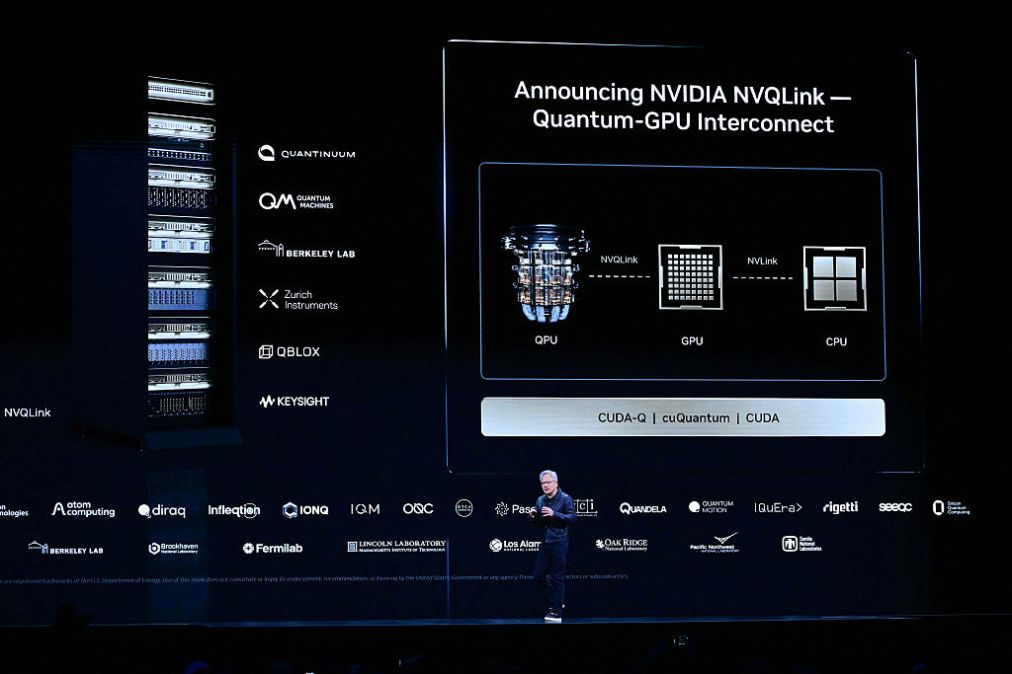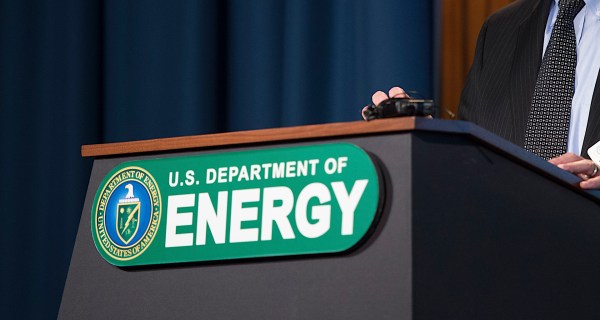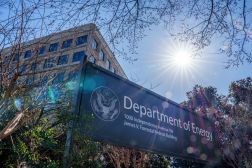Nvidia, Oracle to build Energy Department’s largest AI supercomputer

Nvidia unveiled plans Tuesday to help build seven artificial intelligence supercomputers for the Department of Energy, including the agency’s largest supercomputer, marking a significant development in the technology company’s relationship with the federal government.
Jensen Huang, the CEO and co-founder of Nvidia, announced the project during the company’s GTC conference in Washington, D.C., where he emphasized the need for America to “lead the race” in AI.
“The next wave of inventions, discoveries and progress will be determined by our nation’s ability to scale AI infrastructure,” Huang said. “Together, with our partners, we are building the most advanced AI infrastructure ever created, ensuring that America has the foundation for a prosperous future, and that the world’s AI runs on American innovation, openness and collaboration, for the benefit of all.”
The new systems will be developed and released for the DOE’s Argonne and Los Alamos national laboratories.
As part of the partnership, Nvidia will collaborate with Oracle to build Energy’s largest AI supercomputer, called the Solstice system. This will have 100,000 Nvidia Blackwell graphics processing units to help Energy develop “AI capabilities to drive technological leadership across U.S. security, science and energy applications,” the company said in a press release.
Another system, called Equinox, will have 10,000 Nvidia Blackwell GPUs and is slated for availability in 2026. The Equinox and Solstice machines will be housed at Argonne National Laboratory in Illinois and interconnected via Nvidia networking.
According to the company, scientists will be able to use these supercomputers to develop and train frontier models and AI reasoning models with Nvidia’s Megatron Core, an open-source library for training, along with other company tools.
“Both AI supercomputers will support NVIDIA, Argonne and the DOE’s research collaborations to develop agentic scientists, boosting R&D productivity and accelerating discovery enabled by public research dollars within a decade,” Nvidia said in the release. “Solstice will be built with the DOE’s new public-private partnership model, including industry investments and use cases. This reflects the Trump Administration’s commitment to securing America’s leadership in AI and science.”
Argonne will also host three Nvidia-based systems — Tara, Minerva, and Janus — to assist scientists and researchers.
At Los Alamos in New Mexico, Nvidia’s Vera Rubin platform and networking fabric will be used for its Mission and Vision systems, which will be built by information technology company Hewlett Packard Enterprise. The Mission system, which is expected to be available in late 2027, will be used in the National Nuclear Security Administration’s Advanced Simulation and Computing program.
Huang offered particular praise for Energy Secretary Chris Wright during his keynote, stating that the government official has brought a “surge of energy, a surge of passion” to ensure that America leads in the sector.
“These laboratories are impossible to experiment at the scale and speed we need to. Unless they’re robotic factories, robotic laboratories, all of these different technologies are coming into science at the exact same time,” Huang said. “Secretary Wright understands this and he wants the DOE to take this opportunity to supercharge themselves and make sure that the United States stays at the forefront of science.”
Wright joined Huang at a press briefing later at the conference, where he explained the process for working with Nvidia.
“I think for the United States national security or the prosperity and opportunity of our citizens, it’s just critical that the United States lead in artificial intelligence, and to do that, the government’s got to act differently. We’ve got to do different partnerships,” Wright told reporters.
“We’ve got to do different partnerships, so I reached out to the players in the industry and said, ‘Look, here’s what we have. We have 17 labs, lots of land, incredible scientists, incredible motivation and we want to supercharge our scientific and our national defense efforts. How can we make a deal that’s a win for you and a win for us, and also to try to get our government moving at the speed of business?’”
“In fact, in this partnership, we’re going to get computing power next week that already exists, but immediately steered over to speed up the investment of science now,” Wright added.
Nvidia separately announced the launch of NVQLink, a computing tool that will allow quantum processors to connect to at least eight supercomputing labs.
It comes just one day after the Energy Department announced partnerships with AMD and HPE to bring two new AI supercomputers to Oak Ridge National Laboratory in Tennessee.






